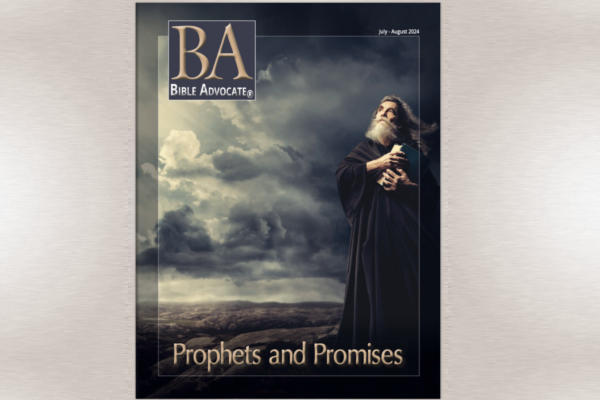I worship every week in a contemporary church. Hymns occur infrequently during the worship service, but they remain an integral, daily part of my life. That’s because in my youth I acquired (and have since retained) the habit of using the hymnal as an aid to prayer.
As a young man who had fallen in love with Jesus, I discovered just how poor my prayer vocabulary was. I was frequently frustrated by my inability to articulate the things in my heart. I longed for a better way to express myself in prayer. When it dawned on me that hymns could be not only sung but also spoken, I began to employ the poetry of Isaac Watts, Charles Wesley, Fanny Crosby, and others as a sort of private diary of prayer. My well-worn hymnal has since bracketed and buttressed my prayers like no other book except the Bible.
Praying the Hymnal
Praying the hymnal is so simple, anyone can do it. It takes no practice and little preparation. It will help you pray when you don’t know what to pray. It will help you express the deepest and highest longings of your heart in ways you may never have experienced otherwise. It will keep or make the great hymns of the church a vital part of your life. It will, over time, fill your praying with rich phrases and stunning verses until, eventually, your memory will overflow with the lofty lyrics of history’s finest poets even when you’re not reading from the printed page.
A few simple suggestions will suffice to get you started in the practice of praying the hymnal.
Speak the hymn.
Resist the temptation to sing. Some people find it easy to pray while they’re singing, but for most of us, speaking will breathe new life into the words of a hymn such as,
Breathe on me, Breath of God,
Fill me with life anew,
That I may love what thou dost love,
And do what Thou wouldst do.
It may be hard at first not to be distracted by the melody, especially with the most familiar hymns. But since you will probably be speaking at a different pace than if you were singing, it will soon become more of a prayer than a piece of music. Many fine hymns that you’ve never sung can be added to your prayer repertoire, since not knowing the melody may actually be an advantage.
Choose hymns that speak directly to God.
Not all hymns are prayers, of course. Some teach, some testify, some inspire. But those written as prayers — like “Have Thine Own Way,” “O Love That Wilt Not Let Me Go,” and “Take My Life and Let It Be” — need no revision or adaptation to aid prayer and worship.
Personalize the hymn.
You may wish to change thee and thine in some hymns to You and Your. You may also want to change corporate language (our and us) to singular (my and me), as well as personalize in other ways. For example, the hymn “O God, Our Help in Ages Past” may be revised as you pray,
O God, our help in ages past,
Our hope for years to come,
You are my shelter from the stormy blast,
And my eternal home.
Focus on what the hymn is saying.
Some people struggle to sincerely pray written words, because they have trouble turning words on a page into the prayer of their hearts. It does take concentration, but it is possible to overcome familiarity, rhythm, rhyme, and any other obstacle to truly pray,
Lord, lift me up and let me stand,
By faith, on heaven’s table-land,
A higher plane than I have found;
Lord, plant my feet on higher ground.
Amplify or meditate on specific lines or words.
Praying a hymn can be just the beginning of prayer, if you give yourself permission to dig deeper into the sentiment the hymn has helped you express. For example, you might pause after praying the first two lines of John Oxenham’s hymn,
’Mid all the traffic of the ways,
Turmoils without, within,
to pray, “Lord, You know that’s exactly what my life has been like this past week. I feel so hurried and harried, even as I come to You in prayer, so . . . ”
Make in my heart a quiet place,
And come and dwell therein.
Or you might stop at the third line and meditate on the phrase a quiet place, picturing a tranquil lake or serene garden, and asking God to make your heart like that.
Pay special attention to hymns that rephrase Scripture.
I’ve found added purpose and power in prayer through hymns drawn from Scripture. This is what Jesus himself did when, on the cross, He cried out, “My God, my God, why have you forsaken me?” He was using the words of a familiar hymn (Psalm 22) to express the cry of His heart.
Many hymns, of course, are based on Scripture, but some are Scripture in verse: “The King of Love My Shepherd Is” (Psalm 23); “As Pants the Hart for Cooling Streams” (Psalm 42); “What Shall I Render to My God?” (Psalm 116:12-19); and “Bless the Lord, O My Soul” (Psalm 103:1), to name a few.
Add your own flourishes.
To these suggestions you will, of course, want to add your own flourishes. But they are offered in the hope that you will soon find new energy and fulfillment in prayer by borrowing the words of great hymn writers. That has been my experience many times, as I have been driven, speechless, to my knees in prayer, only to find exactly what I long to say waiting for me in the lines of my hymnal. And that, I believe, brings blessing not only to me, but music to God’s ears as well.








